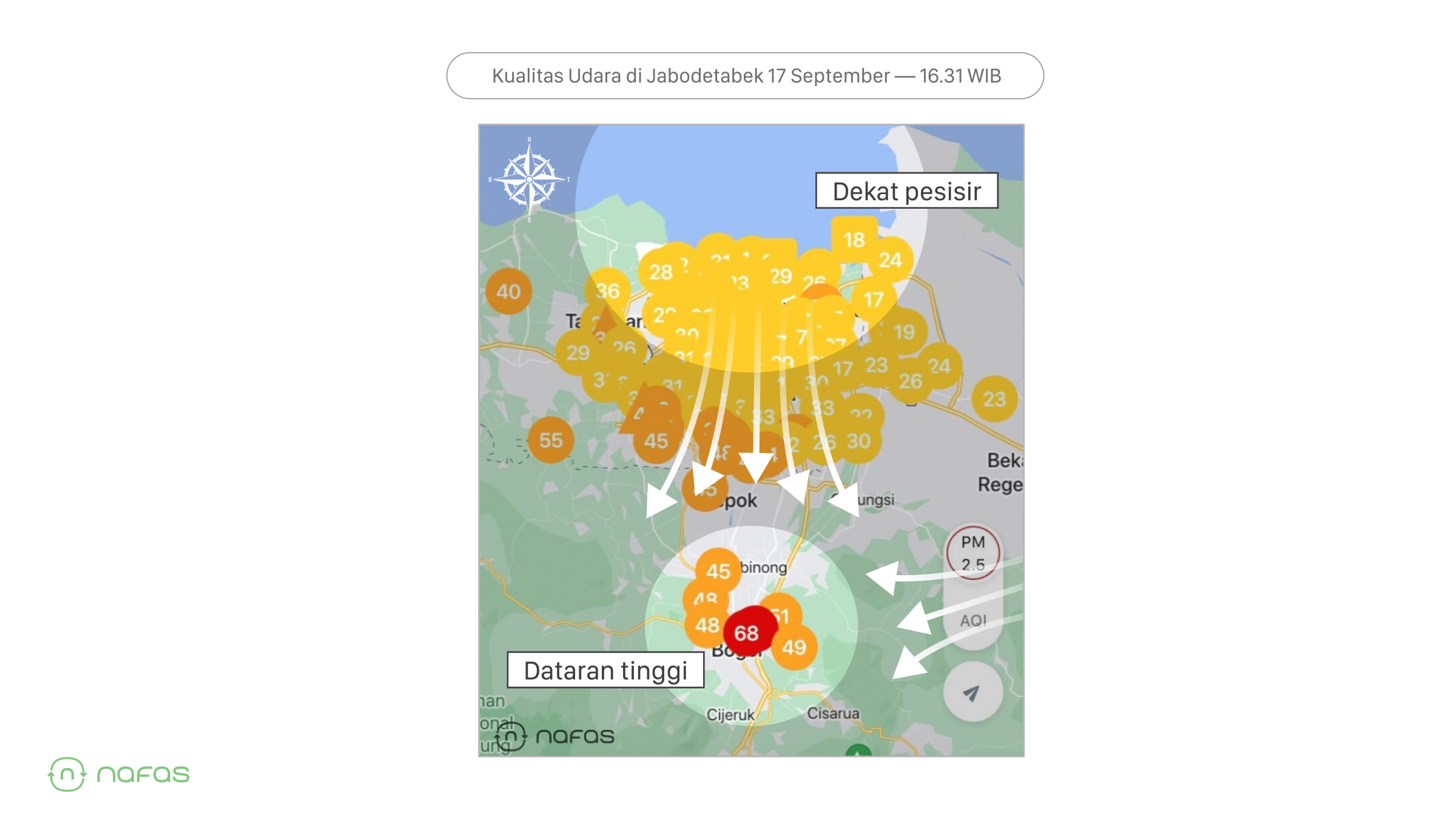The Blue Sky Moment in September: Is it a sign of Improved Air Quality in Jabodetabek?
The air quality in Jabodetabek, often dominated by the "unhealthy" category (both for sensitive groups and the general public), seems to have become a common sight for residents who live, work, or frequently travel in this area. Hence, the moments of blue sky and clean air are rare occurrences, perhaps eagerly awaited by many.
On September 12, 2023, such a rare moment occurred when the air quality in Jabodetabek was recorded as good, with the air quality index color on the Nafas app being yellow.
A similar phenomenon was noted on September 29, 2023, including in areas often labeled as having the worst air quality, such as South Tangerang and Depok.
Nafas sensors recorded fluctuations in PM2.5 pollution levels in these areas. The PM2.5 concentration chart for September shows improved air quality, especially between 11:00 - 17:00, with PM2.5 concentrations ranging from 22-26 µg/m3.
Strong Winds Play a Role in Reducing Pollution Levels in Jabodetabek
Based on Nafas team analysis, the improved air quality in September was due to the contribution of strong winds that helped push pollutants away from the area. This caused pollutants to disperse to other areas, subsequently improving air quality in some Jabodetabek areas near the coast.
However, due to the pollutant dispersion by coastal winds, there was pollutant accumulation in some areas, especially in the highlands near Bogor.
In conclusion, a drop in pollution levels in an area, resulting in a bright blue sky, could be due to strong winds "moving" pollutants to another area. Therefore, it's essential to reduce pollution sources to maintain healthy air quality.
✅ Air pollution can change rapidly. Always be vigilant and ensure to check air quality before engaging in outdoor activities. Follow the recommendations from Nafas!